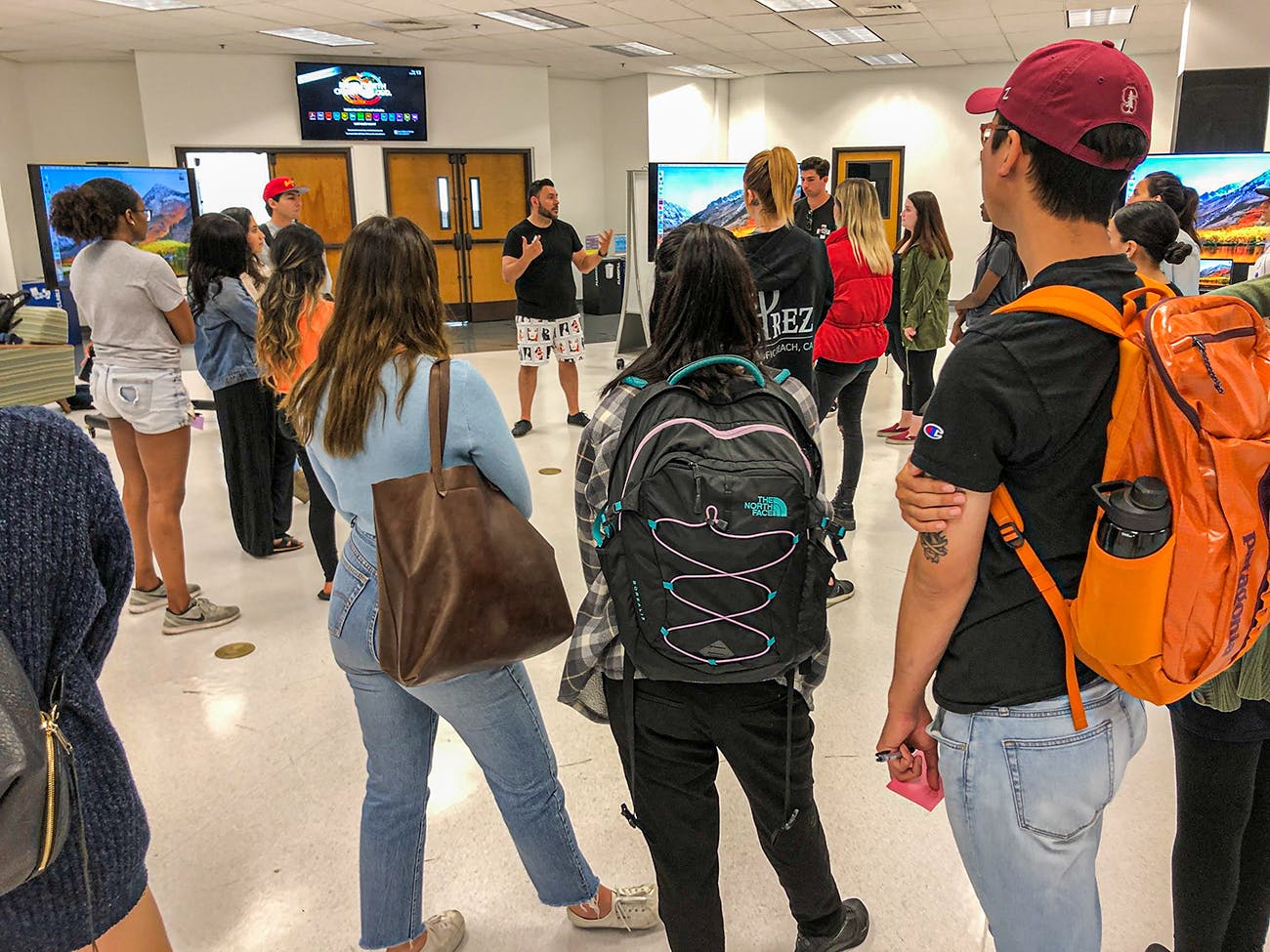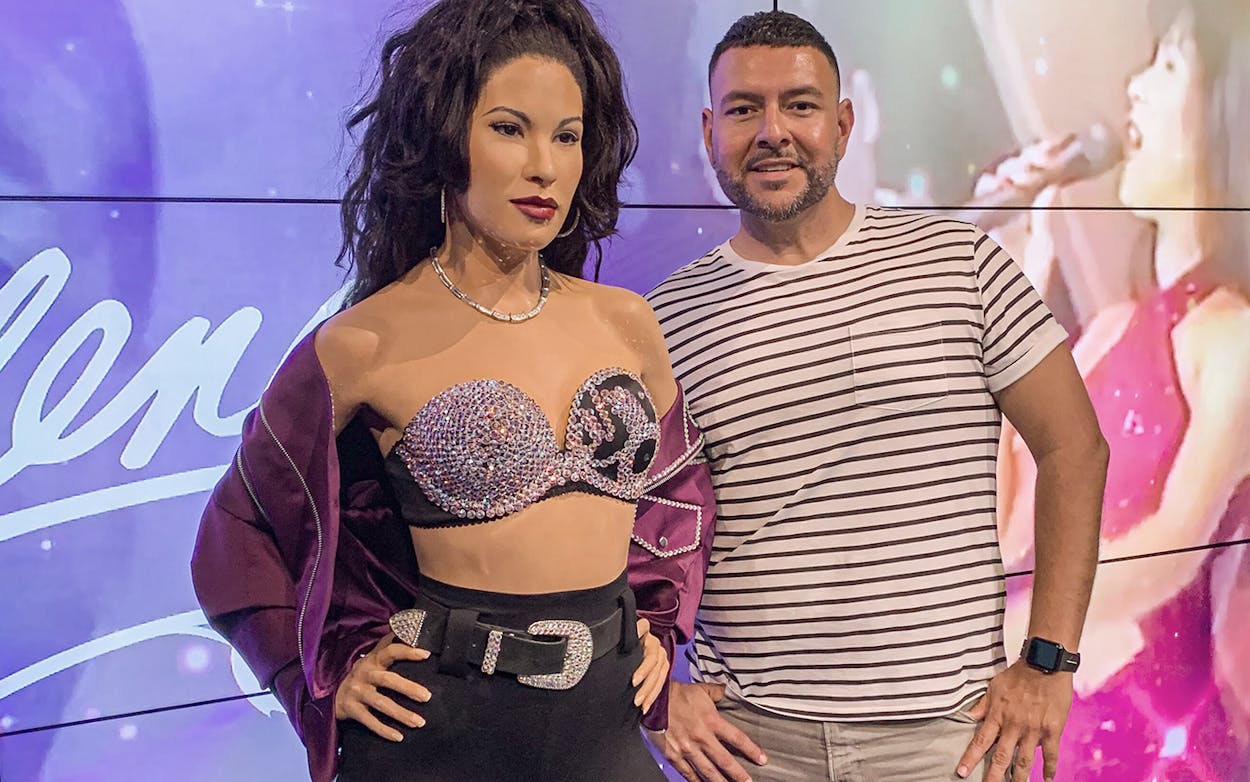As a first-generation Mexican American in Texas, Nathian Shae Rodriguez grew up in two distinct worlds, struggling to reconcile the dual (and sometimes dueling) forces that make up his identity. But when he would turn on the radio as a teenager living in Balmorhea, and hear Selena Quintanilla’s voice come across the airwaves, he finally felt understood. As a fellow Texan, she was able to move between her Mexican and American identities, making a name for herself around the world by singing in her native Spanish, but doing radio interviews in English—she wasn’t pretending to be either; instead, she was authentically both.
Now Rodriguez is an assistant professor at San Diego State University’s School of Journalism and Media Studies. This is his first semester teaching the course “Selena and Latinx Media Representation,” designed to dissect the world in which Selena rose to fame and examine how her legacy impacted future Latinx artists after her death—which happened 25 years ago today—by studying her music and the 1997 biopic about her life, Selena. The course (which is still meeting virtually in light of recent coronavirus-related school closures and social distancing) also takes a look at how Latinx culture has shifted over time, with Rodriguez including books like Guadalupe San Miguel Jr.’s Tejano Proud: Tex-Mex Music in the Twentieth Century and the Rio Grande Valley poet Gloria Anzaldúa’s Borderlands/La Frontera: The New Mestiza on the syllabus.
Rodriguez spoke with Texas Monthly about how the course come together and his relationship to the iconic Tejano singer’s music.
Texas Monthly: What song of Selena’s stands out to you personally?
Nathian Rodriguez: In my later teen years, “Amor Prohibido” really spoke to me because at that time I was also trying to reconcile being queer, being gay. And “Amor Prohibido” kind of has this take on it. Anybody can listen to it and use it to identify themselves because it means “prohibited love,” whether that means prohibited gay love, prohibited interracial love, prohibited love between classes. It was just a song I think that I was able to really identify with because I was struggling with my sexuality when the song came out.
TM: How did you first start to develop this class?
NR: I was in radio for thirteen years, and I was also a club deejay. I started noticing that there weren’t a lot of minorities coming into the radio stations in Midland–Odessa [where I was based]. When I started going to school [at Texas Tech University] for my PhD, I really started getting into how minorities use the media to negotiate their identity and also how they see themselves represented or not represented. It really got me thinking about how there could be a class that integrated Latinx identity but used a pop culture icon to get students interested.
TM: And how did you land on Selena?
NR: Selena was the perfect icon because she transcended genres, she’s transcended generations. People are still talking about her. It seemed like the perfect storm. She was someone that I idolized, someone who really resonated with the Latinx community and that is still pertinent to our culture and to media representation. I started to look at how she influenced people today, so the class itself was really built around her, the legacy that she left behind, and where we are now in terms of media representation for Latinx individuals.
TM: What was your own experience with Latinx representation growing up?
NR: I really didn’t have any mainstream representations of someone like me. When I would turn on the TV or go to the movies, there was nothing that told me that it was okay to be Mexican or even bicultural. Everything that did depict Latinx individuals depicted gangsters, maids, and narcos. It made me wonder if I was a bad person, or if I should be ashamed of my identity. It really messed with me, but it also really made me think about why I wasn’t seeing myself represented. I lived in Texas, and yet I had to turn on Univision and Telemundo to see someone that looked similar to me. But even then, it was set in Mexico. None of it represented who I was, and again, I was stuck between two worlds, and neither of them fully represented me. When I couldn’t see myself in TV or movies, I turned to music because I saw myself represented in Selena, in Elida Reyna, in La Mafia.
TM: What do you think about the way that Selena was represented during her lifetime?
NR: She was in this Tejano genre and she dressed the way she wanted to when she performed, but because it was such a male-dominated genre when she was rising to fame, there was a lot of misogyny and objectification. I also think that she was portrayed as this very wholesome, family-driven woman. There was an interview I showed my class that everyone was surprised about. It’s an interview from 1993 where she says that people should practice abstinence until marriage and that abortion is wrong. She was a progressive, a Democrat. She was very much for the empowerment of women, but here she was saying something like that. I think it speaks to the fact that in the time she was growing up in Texas as a woman, she was able to break a lot of barriers, but she was still confined by very patriarchal bounds.
TM: How do you think her image was then used as a stepping stone for Latinx artists that came after her?
NR: We have people like Cardi B, who very much owns her sexuality. That’s like Selena to the tenth degree, which never would have happened back then. So Selena, I see her being represented as binational, exotic, but also very sanitized for public consumption. But now, her fashion, her music, and the way she carried herself are all influences for new artists. Selena was very much ahead of her time, and she opened up doors by pushing boundaries in music, fashion, and on. Even the amount of media attention she got in her death brought attention to Latinxes in the U.S. in general. Selena passed away in 1995, that was the beginning of the Latin boom. We end up seeing Ricky Martin, Christina Aguilera, Jennifer Lopez, and really noticing the amount of buying power that Latinxes have in the U.S.
TM: What progress needs to be made in terms of representation?
NR: We still see a lot of stereotypical depictions of ourselves. I mean, a lot of popular movies have still portrayed Jennifer Lopez as a maid, or even one of the most popular shows on Netflix is Narcos. But at the same time, with shows like One Day at a Time or On My Block, we’re also getting much more nuanced takes. One Day at a Time, for example, shows a Cuban American family in Los Angeles where one character is nonbinary, and the mother is a single mother suffering from PTSD. That’s a very robust representation.

TM: Can you walk me through an exercise you’re doing in class?
NR: So we had everyone in the class create Pinterest boards to aggregate different musical acts, celebrities, or influencers that have been influenced by Selena. So whether that’s their sound, their fashion, or even the way they present their culture to the world, it helps them see how her legacy has taken a part in what we’re seeing in today’s cultural landscape.
TM: In future semesters, will the class still be centered around Selena?
NR: I think she’s always going to be the figure that we use to anchor the class because when we talk about her and her celebrity, it doesn’t exist in a vacuum. It’s about what was happening in the eighties in Texas as Selena is growing up, it’s about what’s happening in the nineties with the militarization of the border. The Latin boom of the nineties. There are so many sociopolitical and geographical elements tied to the atmosphere that she rose to fame in.
This interview has been edited for length and clarity.








